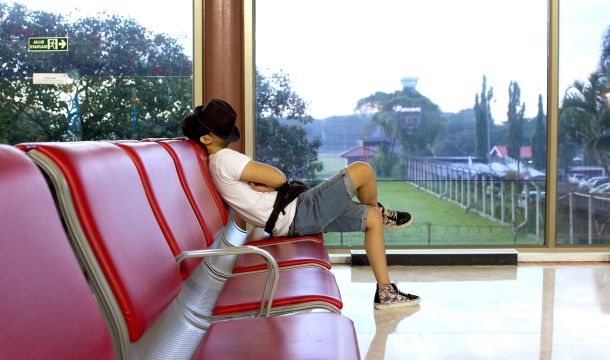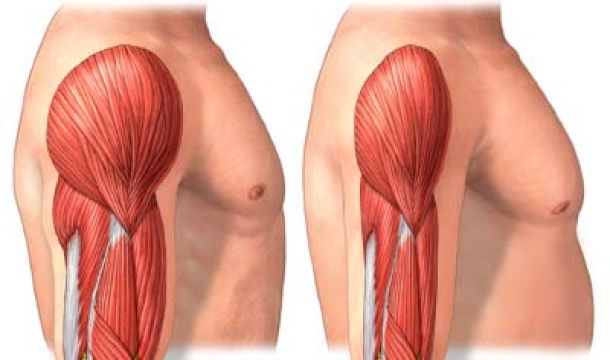Understanding the Criminal Pathways of Victimized Youth
Mariah Robles, University of New Haven
Photo by Jeremy Bishop on Unsplash
In a contemporary study of 64,329 high-risk juvenile offenders, 67.5% reported exposure to four or more adverse childhood experiences, or ACEs (Baglivio & Epps, 2016). Early ACE research assessed exposure to such factors as sexual, physical, and emotional abuse; household mental illness and substance abuse; having an incarcerated household member; parental divorce; and domestic violence (Felitti et al., 1998). Since the seminal research conducted by Felitti and colleagues (1998), there have been countless studies seeking to identify the links between traumatic childhood experiences, their effects on development, and future involvement in criminal behaviors. For instance, Shin and colleagues (2018) found that ACE exposure impacts self-control, impulsivity, and aggressiveness, which are behaviors linked to criminality. Recent studies have expanded ACE research to cover a broader spectrum of traumatic experiences, now including community-level trauma, racism, and discrimination in the realm of adverse childhood experiences.
Increased knowledge of the harmful effects of ACEs on various aspects of development has turned attention to the identification of factors that counteract the harmful effects of ACEs, which are known as positive childhood experiences (PCEs). Craig and colleagues (2017) have identified several categories of PCEs that decrease the likelihood of offending among youth, whereas Baglivio and Wolff (2021) identify specific factors that potentially mitigate the damaging effects of ACEs. Connections with mentors, encouraging peers, school engagement, intimate relationships with family and friends, sense of belonging, and engagement in formally planned activities maintain the ability to deter involvement in criminal behaviors (Baglivio & Wolff, 2021). While these are promising findings, the danger is that not all youth who experience ACEs are exposed to PCEs to the same extent, which increases risk of future offending (Baglivio et al., 2015; Baglivio & Epps, 2016).
The current paper will review existing literature on ACEs and PCEs within minority populations and analyze three recent articles examining the effects of ACEs and PCEs on minority youth. Further, policy implications and directions for future research will be discussed. The purpose of this paper is to highlight the contributing factors and protective factors for criminal behavior within marginalized communities and racial minority youth. This research is important because it can provide policy and program implementations that address the unique criminal pathways of this population, given that their experiences are typically difficult to understand from an outside perspective.
Review of Literature
There are many direct and indirect ACEs that negatively impact youth. Research has consistently shown that caregiver mental health has a significant influence on the types and frequencies of ACEs that offspring experience (Cooke et al., 2019; Kingston & Tough, 2014). For instance, children may be direct victims of ACEs at the hands of their parents (e.g., through sexual abuse, physical abuse, neglect, or emotional abuse), or they may experience indirect effects of adversities that underlie parenting techniques and parental ability to provide a safe, stable, and nurturing environment. Additionally, factors such as low paternal involvement and poor maternal mental health have been linked to social-emotional problems for children within these families (Zhang et al., 2022). Given the fact that child development is most malleable in the first years of life, the presence of intergenerational trauma and ACEs are impactful on individual development and a child’s perceptions of the world. The reality is that youth are drastically affected by events within their childhoods – events which they have no control over.
The damaging effects of ACEs may manifest as externalized responses, such as aggression, or internalized responses, such as anxiety and depression (Cooke et al., 2019). These behavioral responses have been strongly associated with delinquency and criminal behaviors. Baglivio and Epps (2016) found that justice-involved youth are exposed to higher frequencies of ACEs, in comparison to their non-justice involved peers, with justice-involved youth reporting an average of three or more ACEs. Furthermore, Fleming and Nuris (2020) found that each 1-unit increase in an ACE score increased the odds of adult incarceration by 18%, indicating that childhood trauma increases the likelihood of future offending and recidivism (Baglivio et al., 2015; Baglivio & Epps, 2016).
Micro to Meso Approach
Research on ACEs has expanded from a micro-perspective to a meso-perspective, in which researchers have begun investigating the community level variables relevant to ACEs (e.g., socioeconomic status, educational resources, social bonds, community violence, and familial relationships). Freisthler (2004) identified that neglect and child physical abuse increases within families living in poverty and with female head-of-households. This corresponds with the findings of Zhang and colleagues (2022) indicating that low paternal involvement leads to poor maternal mental health, therefore impacting caregiving and increasing ACEs in the household.
In a systematic review of 25 studies, Coulten and colleagues (2007) compiled evidence that child maltreatment is heavily concentrated in disadvantaged neighborhoods. These neighborhoods are characterized by poverty, low employment rates, and comprehensive instability (Coulten et al., 2007). Subsequently, these factors diminish the educational opportunities and community resources that are available to youth. Considering most students enroll in schools that are linked to their zip codes, students in economically marginalized communities are subject to educational disparities and lack of resources (Hill et al., 2017). Within these systems, youth are offered lower-quality curriculums, and they experience lower levels of educational satisfaction, involvement, and access to guidance counselors (Hill & Torres, 2010). This fosters a harmful cycle of trauma, which begins in the home and continues in the form of social issues that impede growth and development into pro-social adults. Baglivio, Wolff, Epps, and Nelson (2015) have identified that this cycle intensifies when children are born into dysfunctional family systems.
ACEs within Ethnic-Minority Populations
Research also has shown that ethnic-minority youth, particularly Blacks and Hispanics, are disproportionately represented in terms of ACE exposure at the individual and community levels, along with their involvement in the justice system. Using spatial regression to identify community-level attributes correlated with high child abuse rates, Freisthler (2004) found that child physical abuse is most prevalent within communities with high percentages of Hispanic families. Additionally, further research examining neighborhood context found that community factors clearly affect ACE exposure, “as over 10% of the neighborhood-level variance in ACE was attributable to affluence and disadvantage” (Baglivio et al., 2015, p. 183).
Returning to the cycle of trauma, children living in vulnerable communities are susceptible to experiencing high exposure to ACEs, which impacts developmental stages and may result in behaviors that stimulate criminal behavior, such as aggression, impulsivity, and low self-control (Shin et al., 2018). Commonly, researchers use the ACEs mentioned in Felitti et al.’s (1998) seminal study to identify ACE exposure. While they cover a wide umbrella of ACEs, one area that is not often considered, and disproportionately impacts ethnic minorities, is racism. Falling victim to systematic racism or individual racism has adverse consequences: it is harmful to the mental health of ethnic-minorities and, regarding systematic racism, clouds their perceptions about the criminal justice system (Hurwitz & Peffley, 2005; Paradies et al., 2015).
In sum, experiencing ACEs has been linked to diminished health and developmental outcomes (Felitti et al., 1998; Webster, 2022). Ethnic minority youth are disproportionately affected by ACEs on both the individual and community levels (Baglivio et al., 2017). Subsequently, experiencing several ACEs exacerbates these effects and drastically hinders the development of children from these vulnerable populations. This occurrence has been labeled as a developmental risk cascade, which Masten and Cicchetti (2010) identify as the compounded negative effects of one system snowballing into various other areas of one’s life (e.g., ACEs influencing adulthood experiences and behavior). Inversely, this developmental cascade may occur in a positive manner, in which positive experiences promote an upwards trajectory with beneficial lasting effects. This is important to consider when developing evidence-based policies, programs, and practices for justice-involved youth.
To illustrate, the popular PACT (Positive Achievement Change Tool) assessment has been widely accepted for its ability to devise individualized treatment plans for juvenile offenders (Baronski, 2004). However, assessment tools traditionally emphasize the risk and criminogenic needs of youth and are susceptible to the development of harsh sanctions for juveniles, which may pose more harm than good to them. Rather, highlighting and multiplying positive childhood experiences with an emphasis on restorative justice brings about more positive outcomes for justice-involved youth. Contemporary research has emphasized the benefits of enhancing the protective factors for ethnic-minority youth in disadvantaged and marginalized communities (Kowalski et al., 2023; Mueller & Carey, 2023; Opara et al., 2020).
Contemporary Research
In a recent study, Kowalski and colleagues (2023) conducted a series of logistic regressions to examine the effects of ACEs and PCEs on a large sample of justice-involved youth from nine states (n=254,874). Ten ACEs and eight PCEs were examined. The researchers investigated the independent effects of ACEs and PCEs on recidivism, specifications of various levels of ACE and PCE exposure, and the cumulative effects of ACEs and PCEs on recidivism. Kowalski et al. (2023) adjusted Baglivio and Wolff’s (2021) operationalization strategies from a single state study to fit their multi-site study using the PACT assessment. After the adjustments, the threshold established for both ACEs and PCEs was 4: that is, exposure to 4+ ACEs or PCEs was considered “High” exposure, whereas less than four ACE or PCE exposures was considered “Low.” To calculate an ACE-PCE composite score, the PCE items were reverse coded (no=0, yes=-1) to allow PCEs to cancel out ACEs, with overall scores ranging from -8 to 10. Recidivism was operationalized as any re-adjudication within one year of reentry.
The results elaborate on previous findings of ACE and PCE exposure. Moreover, they highlight the significant impact that PCEs have on justice-involved youth’s reentry and success. Youth with High PCE exposure had a 29% decrease in reconviction odds, whereas youth with High ACE exposure had an 18% increase in recidivism odds (Kowalski et al., 2023). Additionally, youth with the ‘High ACE/ Low PCE’ combination experienced a greater likelihood of recidivism compared to youth with ‘High ACE/ High PCE’ (59% and 22% increased odds of recidivism, respectively). Overall, the results consistently supported the argument that PCEs mitigate the effects of ACEs.
Another recent study by Mueller and Carey (2023) gathered data on 3,604 youth on probation in Texas. The authors used the three models of resiliency theory (Masten & Cicchetti, 2016) to formulate their hypotheses that multiple factors within youth’s lives (PCEs and ACEs) effect their resiliency and self-control. ACE exposure, PCE exposure, and self-control levels were obtained from the PACT assessment of youth, given that all youth processed through the justice system in Texas undergo a PACT assessment. Further information on ACEs and PCEs were gathered through semi-structured interviews of youth, interviews with residential treatment staff, and juvenile justice records. The authors used ordinary least squares regression (OLS) to test the associations between ACEs, PCEs, and self-control within the evaluation of the three models of resiliency.
In their sample of justice-involved youth, Mueller and Carey’s (2023) results revealed that increased exposure to ACEs had consistent negative impacts on self-control, whereas increased exposure to PCEs had positive impacts on self-control. Statistically speaking, youth who were exposed to 4+ ACEs scored .61 points lower on self-control than their peers exposed to fewer ACEs. Youth exposed to 6+ PCEs scored .61 points higher on self-control than youth with less than 6 PCEs (Mueller & Carey, 2023). However, contrary to the researchers’ hypothesis, high PCE levels did not moderate the effects of ACEs on self-control. The findings also did not support the authors’ alternative hypothesis that high ACEs would lead to increased self-control, under the belief that high ACE exposure would make juveniles numb to the adverse consequences and therefore not be affected by them.
Lastly, Opara et al. (2020) conducted semi-structured interviews with 59 youth residing in an impoverished, violent, New Jersey community. The researchers focused on youth of color (i.e., Black and Latinx youth), because they made up a majority of the chosen community. Participants were organized into eleven focus groups, each consisting of eight to ten participants. Facilitators of the study conducted interviews with each group by asking questions regarding the lives and stressors of ethnic-minority youth within their community. The underlying themes of the participants’ responses were analyzed and coded into the three categories of the community trauma framework presented by Pinderhughes et al. (2015): (1) socio-cultural environment, (2) physical/built environment, and (3) educational and economic environment. The researchers used these themes of the community trauma framework to highlight how the effects of community trauma can extend past the individual and to the entire community.
The personal encounters of the youth provided a more intimate expansion of the community trauma framework, strengthening the argument that community trauma can manifest at the community level and negatively impact those residing in these communities on an individual level. The findings indicated that Black and Latinx youth in under-resourced and violent communities are disproportionately exposed to criminal behaviors (e.g., gun violence and drug use) which negatively impacts their development, results in feelings of hopelessness, and increases their own involvement with criminal behaviors (Opara et al., 2020). These results demonstrate the impact of community trauma on the individual and community resilience levels and establish the need to address community trauma as a public health issue.
Discussion
The aim of this paper was to examine the influence of individual and community-level adverse childhood experiences on juvenile offending and identify protective factors that may mitigate the harmful effects of ACEs. The prevalence of ACEs within samples of justice-involved youth remains strong and cumulative (Baglivio & Epps, 2016). Additionally, ACE exposure for Black and Latinx youth residing in impoverished communities is intensified because they are exposed to the compounded effects of individual-level ACEs and community-level ACEs (Opara et al., 2020). Contemporary research has supported that positive childhood experiences have a positive effect on youth (Kowalski et al., 2023), thus turning attention to increasing the protective factors that reinforce high self-control and reduce the likelihood of juvenile offending such as sense of belonging, strong support systems, positive attitudes towards school, and participation in organized events (Baglivio & Wolff, 2021; Mueller & Carey, 2023). The reviewed literature presents extensive support for increasing protective factors within the lives of justice-involved youth, specifically youth with high ACE exposure, to promote an upwards trajectory of their development.
Policy Recommendations
Kowalski et al. (2023) and Muller and Carey (2023) present strong policy recommendations for increasing PCEs through programming. The positive impacts of PCEs on self-control and recidivism have been clearly illustrated in both studies, which presents a hopeful avenue of research that focuses on providing resources and opportunities that may be lacking in children’s lives based on socio-environmental factors. Criminal behavior is often an outward expression of internalized trauma and pain. However, society typically turns more focus to the crime committed and stigmatizes these populations from the time of their entry in the criminal justice system to beyond their divergence with it. The recommendations by Kowalski et al. (2023) and Muller and Carey (2023) look to build upon the positive experiences and attributes of justice-involved youth, which can sometimes become overshadowed by the negatives of their criminal behaviors.
Opara et al. (2020) suggest a public health approach to solve the deeply rooted issues of community trauma, through policies and collaboration with the sectors that impact the socio-cultural, physical, and educational/economic environments, such as health, education, and social services. Researchers have consistently identified the need for services in offending populations, which criminal justice professionals are not always equipped to offer, such as mental health services, pro-social supports, and leisure activities. Collaboration with various professionals and sectors (e.g., social workers, therapists, education services, legislators) addresses the entrenched issues within offenders and communities that result in criminal behavior. Opara et al. (2020) recommend that implementing prevention strategies for community violence and drug use and providing resources to youth to alleviate the effects of witnessing such acts are the initial steps to address and deter community trauma.
Limitations and Future Research
Research examining ACEs, PCEs, and criminal behavior has been expanded and strengthened, but there are still advancements to be made. Measures of ACEs and PCEs used in current studies do not account for the severity or frequency of each exposure, nor do they take into account the developmental stage in which they occurred (Jaffee & Maikovich-Fong, 2011). These are important characteristics of ACE exposure that may explain the likelihood of responding to trauma with an externalized response, entailing a range of criminal behaviors. Additional research is needed to determine ACE and PCE prevalence differences by sex, race, ethnicity, justice system involvement type (consecutive or concurrent juvenile justice and child welfare involvement), and supervision type, in order to enhance and support PCEs that have a positive effect on youth behavior.
Another major limitation of current research arises with self-report measures. Both Opara et al. (2020) and Mueller and Carey (2023) relied on self-report measures of ACE variables, which may introduce potential biases in reporting and produce inaccurate findings. Additionally, both studies were limited in generalizability, given that Opara et al.’s (2020) sample consisted of 59 Black and Latinx youth from a marginalized community, and Mueller and Carey’s (2023) sample consisted solely of juveniles on probation. Such samples account for a fraction of youth; therefore, future studies may benefit from expanding this research to other demographic groups or communities with various attributes. Lastly, one major limitation of Mueller and Carey (2023) was the lack of consideration of confounding variables that could influence self-control. Researchers should include the analysis of confounding variables to establish a more direct link between ACEs, PCEs, and self-control. In sum, research advancements have pushed ACEs from a micro-level to meso-level concern, which has generated attention at the macro-levels and created a new direction for future scientific research.
Conclusion
ACEs have evolved as explanations for inter-disciplinary issues such as physical and mental health concerns; more specifically, they have been used to comprehend the role that trauma plays in criminality. Early ACE research sought to identify the causation of exposure to traumatic events, but contemporary research has shifted efforts towards identifying safeguards against experiencing ACEs and their adverse effects. Such findings contribute to evidence-based policies, programs, and practices that are effective in reducing juvenile recidivism and aiding development into prosocial adults. It is crucial to address ACEs within youth, because their developing brains are malleable, resulting in a greater likelihood of reform and resiliency as compared to adults. Further, increasing the protective factors within the lives of youth offers several resources to offset the effects of ACEs in their early stages, thus preventing the transmission of trauma to future generations within these family systems.
References
Andrews, D. A., Bonta, J., & Hoge, R. D. (1990). Classification for effective rehabilitation: Rediscovering psychology. Criminal Justice and Behavior, 17(1), 19–52.
Baglivio, M. T., & Wolff, K. T. (2021). Positive childhood experiences (PCE): Cumulative resiliency in the face of adverse childhood experiences. Youth Violence and Juvenile Justice, 19(2), 139–162. https://doi. org/10.1177/1541204020972487
Baglivio, M. T., Epps, N. (2016). The interrelatedness of adverse childhood experiences among high-risk juvenile offenders. Journal of Juvenile Justice, 14(3), 179-198.
Baglivio, M. T., Wolff, K. T., Epps, N., & Nelson, R. (2017). Predicting adverse childhood experiences: The importance of neighborhood context in youth trauma among delinquent youth. Crime & Delinquency, 63(2), 166-188.
Barnoski R. (2004). Washington State juvenile court assessment manual, version 2.1. Washington State Institute for Public Policy.
Cooke, J. E., Racine, N., Plamondon, A., Tough, S., & Madigan, S. (2019). Maternal adverse childhood experiences, attachment style, and mental health: Pathways of transmission to child behavior problems. Child Abuse & Neglect, 93, 27-37.
Coulton, C. J., Crampton, D. S., Irwin, M., Spilsbury, J. C., & Korbin, J. E. (2007). How neighborhoods influence child maltreatment: A review of the literature and alternative pathways. Child Abuse & Neglect, 31, 1117-1142.
Craig, J. M., Piquero, A. R., Farrington, D. P., & Ttofi, M. M. (2017b). A little early risk goes a long way: Adverse childhood experiences and life-course offending in the Cambridge Study. Journal of Criminal Justice, 53, 34-45. https://doi.org/10.1016/j.jcrimjus.2017.09.005
Felitti, V. J., Anda, R. F., Nordenberg, D., Williamson, D. F., Spitz, A. M., Edwards, V., & Marks, J. S. (1998). Relationship of childhood abuse and household dysfunction to many of the leading causes of death in adults: The adverse childhood experiences (ACE) study. American Journal of Preventative Medicine, 14(4), 245-259.
Fleming, C. M., & Nuris, P. S. (2020). Incarceration and adversity histories: Modeling life course pathways affecting behavioral health. American Journal of Orthopsychiatry, 90(3), 312-323.
Freisthler, B. (2004). A spatial analysis of social disorganization, alcohol access, and rates of child maltreatment in neighborhoods. Children and Youth Services Review, 26(9), 307-319.
Hill, N. E., & Torres, K. (2010). Negotiating the American dream: The paradox of Latino students’ goals and achievement and engagement between families and schools. Journal of Social Issues, 66(1): 95-112.
Hill, N. E., Jeffries, J. R., & Murray, K. P. (2017). New Tools for Old Problems: Inequality and Educational Opportunity for Ethnic Minority Youth and Parents. The ANNALS of the American Academy of Political and Social Science, 674(1), 113-133. https://doi-org.unh-proxy01.newhaven.edu/10.1177/0002716217730618
Hurwitz, J., & Peffley, M. (2005). Explaining the great racial divide: Perceptions of fairness in the US criminal justice system. The journal of politics, 67(3), 762-783.
Jaffee, S. R., & Maikovich-Fong, A. K. (2011). Effects of chronic maltreatment and maltreatment timing on children’s behavior and cognitive abilities. Journal of Child Psychology & Psychiatry, 52(2), 184-194. https://doi.org/10.1111/j.1469-7610.2010.02304.x
Kingston, D., & Tough, S. (2014). Prenatal and postnatal maternal mental health and school-age child development: A systematic review. Maternal and Child Health Journal, 18(7), 1728-1741.
Kowalski, M. A., Hamilton, Z., Kigerl, A., Baglivio, M. T., & Wolff, K. T. (2023). Protecting against adversity: The role of positive childhood experiences in youth recidivism. Youth Violence and Juvenile Justice, 21(3), 248-74. https://doi.org/10.1177/15412040221133106.
Masten, A. S., & Cicchetti, D. (2010). Developmental cascades. Development and Psychopathology, 22, 491-495. Crossref. PubMed. IS
Masten, A. S., & Cicchetti, D. (2016). Resilience in development: Progress and transformation.
Mueller, K. C., & Marcus T. C. (2023). How positive and negative childhood experiences interact with resiliency theory and the general theory of crime in juvenile probationers. Youth Violence and Juvenile Justice 21(2), 130- 48. https://doi.org/10.1177/15412040221131278.
Opara, I., Lardier, D. T., Metzger, I., Herrera, A., Franklin, L., Garcia- Reid, P., & Reid, R. J. (2020). Bullets have no names: A qualitative exploration of community trauma among black and latinx youth. Journal of Child & Family Studies, 29(8), 2117–29. https://doi.org/10.1007/s10826-020-01764-8.
Paradies, Y., Ben, J., Denson, N., Elias, A., Priest, N., Pieterse, A., Gupta, A., Kelaher, M., & Gee, G. (2015). Racism as a determinant of health: A systematic review and meta-analysis. PloS one, 10(9).
Pinderhughes, H., Davis, R., & Williams, M. (2015). Adverse community experiences and resilience: a framework for addressing and preventing community trauma. Oakland CA: Prevention Institute.
Shin, S. H., McDonald, S. E., & Conley, D. (2018). Profiles of adverse childhood experiences and impulsivity. Child Abuse & Neglect, 85, 118-126. https://doi.org/10.1016/j.chiabu.2018.07.028
Webster, E. M. (2022). The impact of adverse childhood experiences on health and development in young children. Global Pediatric Health, 9. https://doi-org.unh-proxy01.newhaven.edu/10.1177/2333794X221078708
Zhang, L., Mersky, J. P., & Lee, C. P. (2022). Intergenerational pathways linking mothers’ adverse childhood experiences and children’s social-emotional problems. Child Maltreatment, 28(1), 107-118. https://doi-org.unh-proxy01.newhaven.edu/10.1177/10775595211067212
Recent Articles

Understanding the Criminal Pathways of Victimized Youth

The Price of Punishment: Exclusionary Discipline in Connecticut PreK-12 Schools

Breaking the Cycle of Absenteeism: Strategies for Prevention

Evidence-Based Professionals' Monthly - March 2024

Quarterly for Evidence-Based Professionals - Volume 8, Number 3

Evidence-Based Professionals' Monthly - April 2024

Unlock the Power of Cognitive Behavioral Therapy (CBT): Elevate Your Practice!

MI Days-2.0


